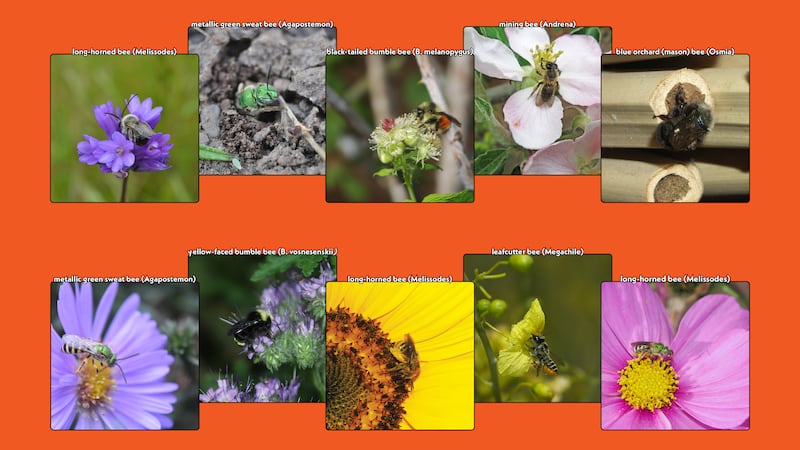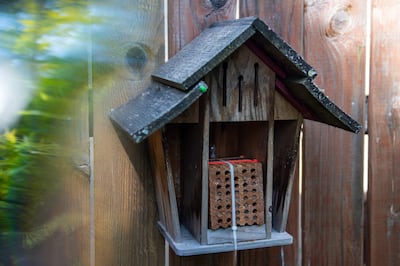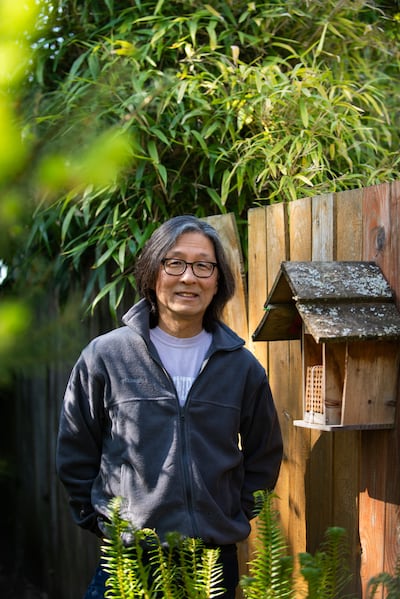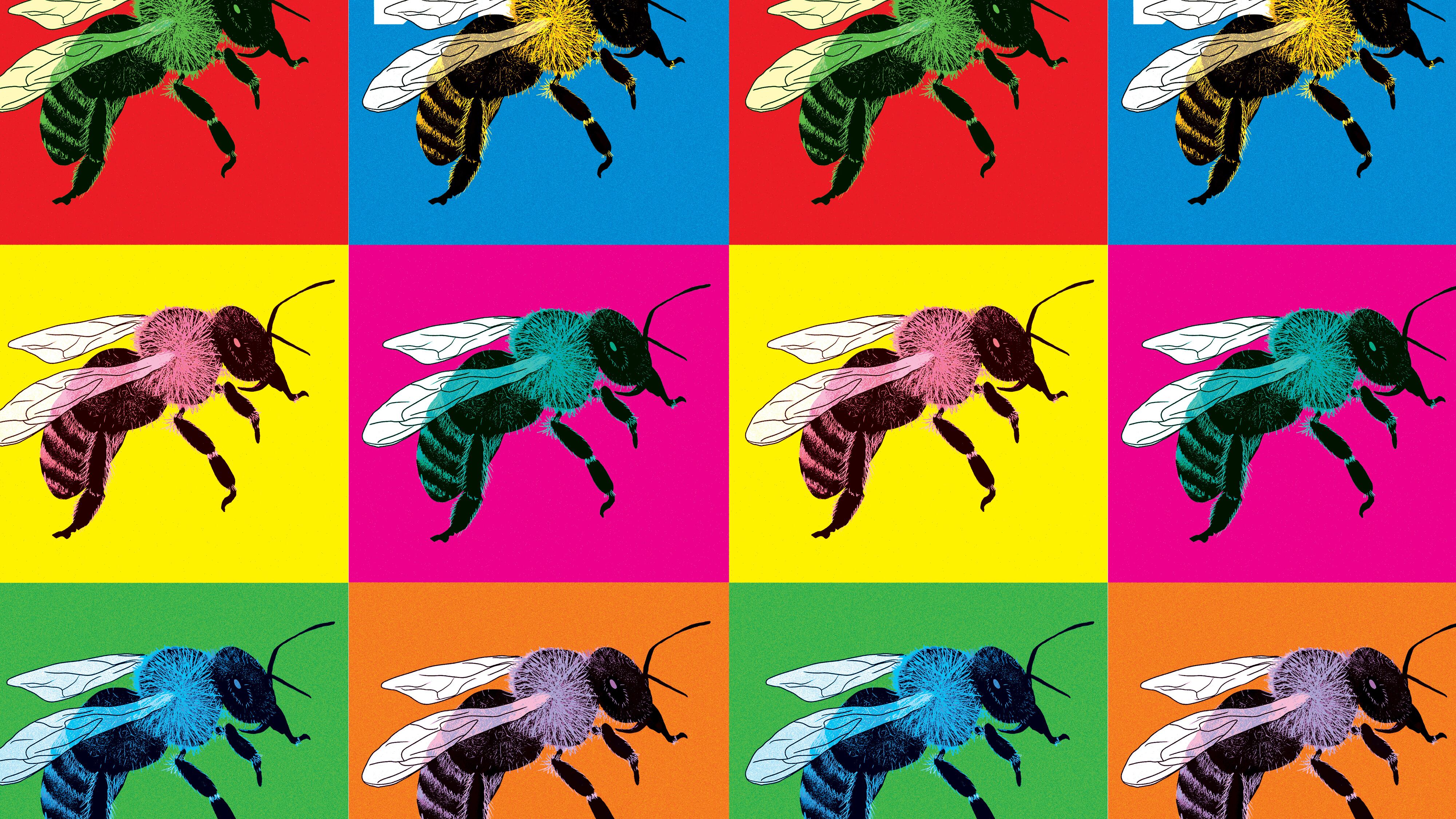It seemed like a good idea at the time. Everyone was doing it.
In the early 2000s, Portland cultivated a reputation for urban homesteading by steadily relaxing zoning laws that hindered the raising of one’s own food. In 2015, with mainstream awareness acutely tuned to “save the bees,” the city eased its backyard beekeeping regulations.
Hobbyist beekeepers no longer needed to get approval signatures from their neighbors. Instead, they needed only to send a letter to each, informing them of the new bees, and file an affidavit of notification with the city. That changed again in 2018, with backyard beekeepers no longer needing to inform the city of their hives, either.
Portland wasn’t unique in its newly relaxed approach to honeybees, nor was it the first. Other big cities that legalized the practice before Portland include New York, Los Angeles, San Francisco and Detroit. Even the Obamas added a beehive to the White House garden in 2009.
But Portland went further. It is the only major U.S. city that doesn’t require an annually renewed permit. Most cities also mandate inspection, and are typically stricter on hive density than Portland.
The problem is, research in the ensuing years has made it clear that honeybees—which are domesticated livestock in no danger of extinction—usurp and replace native pollinators, including threatened species like bumblebees and butterflies, by outcompeting them for a finite supply of resources as well as by introducing pathogens into the native population. Unlike other urban livestock, bees fly away from the homeowner’s property and impact the whole area, foraging as far as 5 miles from their hive.
With already limited flowering plants and a vast amount of lawns and concrete, suddenly adding hundreds of thousands of honeybees into a previously balanced residential environment disrupts it substantially.
“Keeping honeybees is not conservation, although it’s often promoted as that—think about all those ‘save the bees’ campaigns that feature honeybees,” says Matthew Shepherd, director of outreach and education for the Xerces Society for Invertebrate Conservation, an international nonprofit based in Portland. “Honeybees are domesticated livestock and not a solution to our declining populations of native bees, in the same way that a chicken coop in sagebrush isn’t the answer to help sage grouse.”
The Xerces Society advises that “every honeybee hive deprives over 100,000 native pollinators of food.” The British conservation group Buglife recommends 5 acres of habitat for each honeybee hive.
Depending on lot size, Portland’s livestock code, known as Title 13, allows between four and six hives per residential backyard. That means the neighborhood’s flower resources for roughly a half-million native pollinators may be sucked up by just one hobbyist. (By contrast, L.A. and Detroit allow only two hives on a typical 5,000-square-foot lot.) And because Portland ended registration and permitting, the actual number of beehives in the city is unknown.
“Honestly, I don’t know how many honeybee hives there are in Portland,” Shepherd says. “You can speculate about there being one on every block, but I really don’t know how many there are.”
Jessica Anderson, board and public affairs officer for Portland Urban Beekeepers, which has around 200 members, also said her group could not estimate how many hives are currently in the city. The group was instrumental in ending the permitting and notification requirement that prior to 2018 provided an accounting of hives. Portland Urban Beekeepers began lobbying City Hall for relaxed regulations in 2014, a time when there were 83 registered hives in the city (“Let It Bee,” WW, Aug. 16, 2014). “As a club we are mindful of all pollinators,” Anderson added. “We are a honeybee group and we also promote education and pollination for honeybees and all native species.”
Perhaps as a result of Portland’s relaxed regulations, there are now numerous local commercial honey producers who proudly promote that their honey is sourced from hundreds of hives they maintain in dozens of backyards and rooftops throughout the city.
What they don’t talk about is the collateral damage.
But the Portland bee story has another twist. In an unorganized and organic countermove, with no monetary incentive and little fanfare, a silent army of mason bee (Osmia lignaria) enthusiasts are pursuing their own strategy to “save the bees”—from other bees.
How I Fell Down a Rabbit Hole Filled With Bees
I’m an enthusiastic and practiced urban homesteader in Northeast Portland. I grow most of my produce through the year. I raise ducks for the eggs, and the cuteness. I dehydrate, can, pickle and ferment. I’m a data fiend, keeping a massive garden spreadsheet going back a decade, which details everything from sowing and germination dates to fertilizers, harvest dates, yield and any problems. Temperature and humidity monitors inside the greenhouse and outside log every 15 minutes. Want to know my backyard weather on Sept. 14, 2019, at 3:45 am? I can tell you in two seconds.
Over the years, I observed pollination problems. They were most noticeable in my cherry trees, which burst each spring with abundant flowers and set fruit. But then 90% of the crop would abort around the size of a raisin. Classic sign of poor pollination, especially after ticking off the other boxes.
(Since cherries bloom at the crack of spring, sometimes even the tail end of winter, it means the weather in Portland will likely still be cold and rainy, which European honeybees dislike, but which does not deter mason bees, aka orchard bees.)
Naturally, in the face of pollination problems, my first ersatz pioneer thought was, “Maybe I’ll get a beehive…” Friends who visited the “back forty” (feet, not acres) asked why I didn’t have a beehive to go with all the rest of the self-sufficiency jazz. While talking pollination with Farmer Ted at the excellent Cully Farm Store during my monthly trip to buy duck feed, he suggested a beehive, and when I said I was tight on space, he mentioned putting it in a neighbor’s yard, which I could certainly do. Everyone loves bees, right?
And then somehow, during the immersive research about pollination, I stumbled onto the Xerces Society website, and the dark truth about urban beekeeping.
How Honeybees Eliminate Native Pollinators
“The honeybee is not a native of our continent. The Indians concur with us in the tradition that it was brought from Europe, but when and by whom we know not. The bees have generally extended themselves into the country, a little in advance of the white settlers. The Indians call them the white man’s fly and consider their approach as indicating the approach of the settlement of the whites.” —Thomas Jefferson, Notes on the State of Virginia, 1781
When most people think of “bee,” they think only of the highly profitable and invasive European honeybee (Apis mellifera). All other pollinators are lost in the klieg light of honeybee PR. Forgotten are the bumbles, masons and leafcutters…the flies, the wasps, the beetles...the butterflies, mosquitoes and moths. (This could also be due in part to a century of cartoon tropes where “bee” meant only a black-and-yellow-striped thing, often illogically male, and frequently wearing white gloves.)
There are over 20,000 different bee species on the planet—3,400 in North America—but only eight species are honeybees.

European honeybees are great at commandeering finite pollen and nectar resources thanks to their effective system of anatomy, hives, social structure, military hierarchy, and communication. (Much like the human colonizers who brought them to North America.)
Their dense populations and 2-to-5-mile radius of activity (mason bee pollen collection extends only about 300 feet from their nest) means they take all the food, even faraway food, while also spreading pathogens deep into wild insect populations and turning communal flowers into disease vectors for things like deformed wing virus (DWV), the Varroa destructor mite, and the single-celled parasite Nosema ceranae, which has been implicated in colony collapse disorder. (Note: Great metal band name—“Varroa Destructor.”)
When domesticated honeybees take the resources from a neighborhood’s native pollinators, starvation might seem the obvious result, but it’s not as simple as that. Native populations don’t immediately collapse with the introduction of European honeybees. It will take a number of years and a dozen insect generations before the symptoms of ongoing famine become apparent.
When honeybees begin raiding nearby flowers in overwhelming hive army numbers, it forces native solitary bees to travel farther distances to find pollen, which harms them, their brood, and all future generations in a number of ways. As well, the food shortage means that when larvae do hatch they have a smaller food cache, resulting in a smaller and weaker second generation. If those larvae manage to reach maturity and become bees, they’ll have an exponentially more difficult time finding pollen than their mother did. Meanwhile, invasive honeybees will be even more firmly established and expanded—so the downward native spiral triggered by a backyard beekeeper’s hive continues.
It’s not inaccurate to say honeybees are the ultimate colonizers.
But Don’t the Bees Need Saving?
The well-known mantra “save the bees” has mashed together several different issues into one catchphrase and sown confusion over the past 20 years. It’s important to keep the distinction clear:
• There is “colony collapse disorder,” which only applies to managed livestock bees.
• There is general “extinction of native bees” and other pollinators.
Colony collapse disorder is a syndrome that plagues the apiary industry, a massive agricultural sector that reaps $15 billion annually in the U.S. Much of that industry revolves around “migratory pollination”—that is, trucking bees to fields. The apiary industry is a cog in the industrial farm system, with migratory beekeepers working dozens of crops on a national circuit that begins in California, where almond orchards flower first.
During the spring and summer, honeybees will be trucked thousands of miles on a circuit, fed only a single flowering crop for weeks rather than a more natural, diverse diet. Overcrowding is the norm, and they efficiently pass viruses and parasites between them, while being constantly exposed to ag chemicals. It hardly seems surprising when these overtraveled, overworked animals collapse during the winter.
The problem of colony collapse disorder was observed late in the 20th century. By 2007, the syndrome got its terrifying name. Biologists feel it’s the cumulative result of those previously mentioned stressors placed on a hive during the pollinating season. In 2020, The Guardian said almond pollination is “like sending bees to war.” This year (2024–25), national honeybee losses reached a staggering 60%.
But honeybees are in no danger of extinction any more than cows are. As a farmed, domesticated commodity, we can always make more. Colony collapse is more an economic problem than an environmental one. But when thousands of species of wild pollinators disappear from the web of life? Those are the bees you want to save.
Honeybees Just Ain’t All That
Like many celebrities with overactive PR agents, honeybees aren’t that great at what they’re supposed to be experts in: pollinating plants.
With only a 5% pollination rate, they pale in comparison to mason bees, which boast an impressive 95% rate. That’s because honeybees gather pollen and transport it back to the hive in the “honey baskets” (corbiculae) situated on their hind legs. It’s great for getting pollen back to the hive, but terrible for spreading it between flowers. In contrast, mason bees are covered with hair that grabs pollen like Velcro, coating their bodies.
Further complicating the case for honeybees is that they’re responsible for spreading invasive plants such as Himalayan blackberries, Scotch broom, Japanese knotweed and dozens of others. The characteristic that makes honeybees so environmentally adaptive is their ability to harvest pollen and nectar from almost any source, while native bees need native plants. As Scientific American writes: “Beekeepers secretly love invasive plants. Their intense proliferation provides a lucrative and predictable nectar flow—perfect for the honey bees, and beekeepers, to capitalize on—but the plants, too, disrupt native ecosystems.”

Further, because native plants and native pollinators evolved together, some plants may require only native bees for pollination. Like bumblebees, which employ a tactic called “buzz pollination” in which they grasp a flower and vibrate like mad to shake pollen from secure areas that can’t be touched by honeybees.
Twenty-eight percent of bumblebee species in North America are considered threatened, and more than 40% of invertebrate pollinator species, primarily bees and butterflies, may face extinction in the coming decades.
Native pollinators are getting done in by a string of factors. Climate change being a huge one, of course. Then there’s the general ongoing urbanization, loss of habitat, and endless agricultural chemicals, which homeowners who buy them at Lowe’s tend to use at levels higher than even industrial agriculture regulations allow, and much more indiscriminately.
“Here in the Pacific Northwest, there’s one bumblebee that was very localized in Southern Oregon and Northern California called Franklin’s bumblebee,” the Xerces Society’s Shepherd says. “That was last seen in the late 1990s and hasn’t been recorded since, so that’s one bumblebee that may have gone extinct.”
Another missing bee? The western bumblebee. It was once one of the most common bumblebees from Alaska to Colorado. “It used to be common across the Willamette Valley, but now if you want to see it, you have to go up to Mount Hood,” Shepherd says. “It’s effectively disappeared from the places where people are living.”
What Can You Do to Help Native Pollinators?
It would be a mistake to read this essay as anti-honeybee. But just like you shouldn’t graze cattle in a cul-de-sac, you shouldn’t raise honeybees in the city.
The Urban Beekeepers disagree, of course. But perhaps there’s room for persuasion. When asked to speculate on whether honeybee keepers would relinquish their hobby if they learned there was a negative impact on Portland’s native bees, Anderson replied, “It would really be total speculation on my part, but I certainly could see some. I certainly could see some doing that, for sure.”
One alternative is to raise mason bees, aka blue orchard bees. They’re native, gentle, stingerless, practically zero maintenance, and stunningly efficient pollinators.
Almost everyone falls into the mason bee subculture by accident. I spoke with Tae Surh, who’s been raising mason bees at his Northeast Portland home and knew nothing about them until his middle school-age son’s class project eight years ago. Surh bought a few tubes from a garden supply store and since then has passed along many generations and thousands of bees to co-workers. Many of those converts have subsequently shared their cocoons with others.

“I made a simple box out of some leftover cedar fencing stock that I happened to have,” Surh says. “Just looks like a little shoebox and it’s under an overhang by our back door. It catches sun in the morning and gets warm, and the bees come out, and then it gets shady again.”
“I’ve cut myself down to about 120 tubes,” Surh says. At roughly 10 individual cocoons per tube, that translates to around 1,200 bee pupae. The ratio in tubes is about 2 to 1 males to females, with males living just a couple days as their only role is to mate. (Mason bees cleverly lay the males at the front of the tube so they emerge first.) A general rule of thumb is that around 250 female mason bees can pollinate an acre of crops.
Related: So, setting aside honeybees, what can citizens do to truly “save the bees”?
Among mason bee enthusiasts, the words “evangelist” and “obsessed” are freely used. One friend of Surh’s got a teaching job in Southeast Portland, put up mason bees in the schoolyard, and soon had them in her own backyard.
“It teaches people about the cycle of life,” Surh says. “It’s all very cool: You have them in your backyard, you’re sitting out there in the late afternoon when the weather is nice, and they’re flying back and forth, and you feel really good about it.”
And that, my friend, is true “saving of the bees.”

